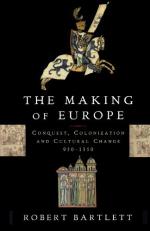|
This section contains 384 words (approx. 2 pages at 300 words per page) |

|
Many Europeans considered the decades before World War I the Belle Epoque (Beautiful Era), a time when society was at its grandest and life for most was wonderful. After World War I, many Europeans identified their youth with this period. Stefan Zweig (1881-1942), an Austrian Jewish writer, epitomized this age in his autobiography, The World of Yesterday (1943). Calling his early years a "Golden Age of Security" in which Austrian middle-class families felt assured of their economic and political well-being, he also revealingly described the social anxiety surrounding female adolescence in the 1890s.
This "social morality," which, on the one hand privately presupposed the existence of sexuality and its natural course, but on the other would not recognize it openly at any price, was doubly deceitful. While it winked one eye at a young man and even encouraged him with the...
|
This section contains 384 words (approx. 2 pages at 300 words per page) |

|




